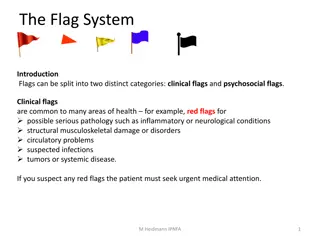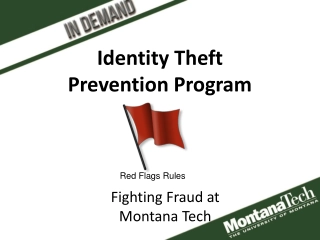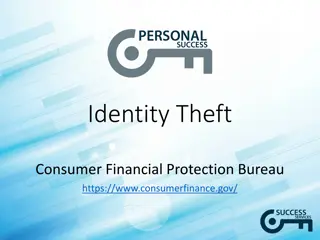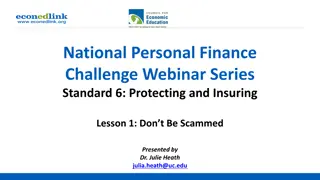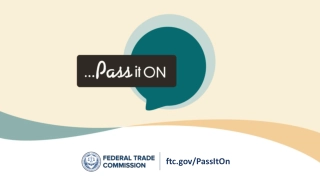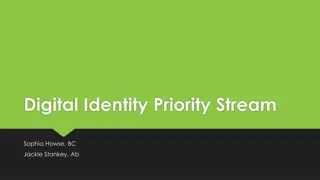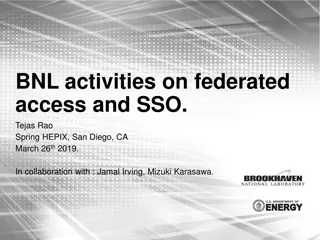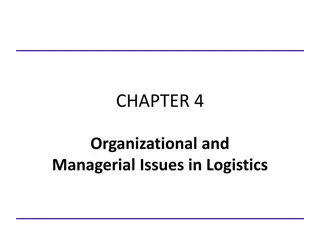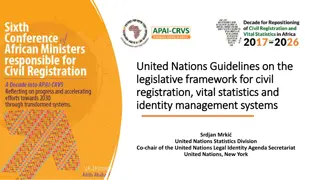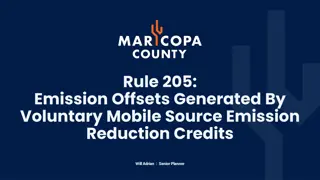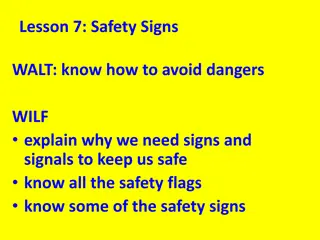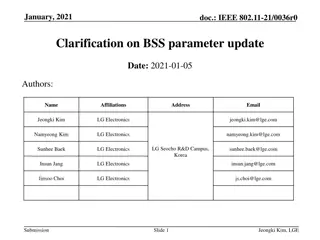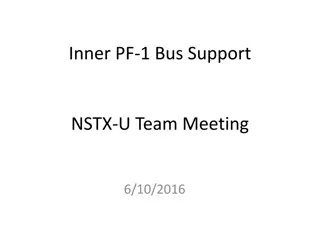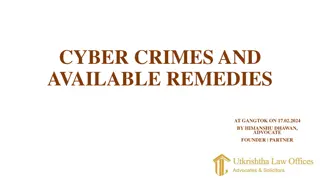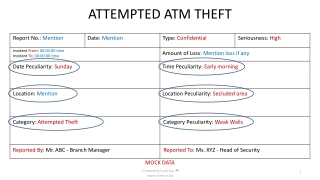Understanding the Red Flags Rule for Identity Theft Prevention
Learn how the Red Flags Rule aims to detect, prevent, and mitigate identity theft. Explore the goals of this training, identify red flags of potential fraud, and understand the application of the rule to financial institutions and creditors. Discover what covered accounts are and how to create unit-specific procedures to comply with the Identity Theft Prevention Program.
Download Presentation

Please find below an Image/Link to download the presentation.
The content on the website is provided AS IS for your information and personal use only. It may not be sold, licensed, or shared on other websites without obtaining consent from the author. Download presentation by click this link. If you encounter any issues during the download, it is possible that the publisher has removed the file from their server.
E N D
Presentation Transcript
Red Flags Rule Detecting, Preventing, and Mitigating Identity Theft
The Goals of This Training To define commonly used terms related to Identity Theft To explain the federal rules intended to detect, prevent and mitigate Identity Theft To help you identify if you must comply with one or more sections of the Red Flags Rule To assist you in creating unit-specific procedures that will comply with the Identity Theft Prevention Program
Identity Theft Red Flag A pattern, practice, or specific activity that indicates the possible existence of identity theft.
The Red Flags Rule Applies to financial institutions and creditors that offer or maintain covered accounts.
Covered Account An account that a creditor offers or maintains primarily for personal, family, or household purposes that involves or is designed to permit multiple payments or transactions (examples include student loans and tuition and fee payment plans) Any other account maintained for which there is a reasonable foreseeable risk of identity theft
Identifying Red Flags Potential indications of fraud include: Alerts, notifications, or other warnings from credit agencies Suspicious documents or personal identifying information Suspicious or Unusual account activities Notices from customers, victims of identity theft, law enforcement authorities, or others
Alerts, Notifications, and Warnings Watch for these notices from consumer reporting agencies, service providers, or fraud detection services: A notice of address discrepancy An active duty alert or a fraud alert included with a consumer report A notice of credit freeze in response to a request for a consumer report
Suspicious Documents Identification documents that appear to have been altered or forged The photograph or physical description on an ID that doesn t match the customer presenting it Information on the identification that is inconsistent with other information provided or readily accessible, such as a signature card or recent check An application or document that appears to have been destroyed and reassembled
Suspicious Personal Information Personal Identifying Information (PII) provided is inconsistent with PII that is on file, or when compared to external sources. Examples would be: Identifying information presented does not match up to information on consumer report The SSN has not been issued or is listed on the Social Security Administration s Death Master File There is a lack of correlation between the SSN range and the date of birth
Fraudulent Personal Information Personally identifiable information provided is associated with known fraudulent activity, or is of a type commonly associated with fraudulent activity. For example, The address on a document is the same as the address provided on a known fraudulent document The address on a document is fictitious, a mail drop, or a prison The phone number is invalid or associated with an answering service
Suspicious Account Activity Change of address on account followed by a request to change student s/customer s name Payments stop on an otherwise up-to-date account Mail sent to a student/customer is repeatedly undeliverable although there is account activity Notice to TTU that the account has unauthorized activity
Detect Red Flags Now that you know what a Red Flag looks like, you need to come up with procedures to detect Red Flags in your own area. Two areas of particular concern are: 1. Obtaining identifying information about, and verifying the identity of a person opening/maintaining a covered account (This can be as simple as requesting a picture ID anytime a student transacts business with your department.) 2. Authenticating customers (e.g. requiring a logon ID and password if online or verifying birthday by phone), monitoring transactions and verifying the validity of change of address requests
Responding to Red Flags Report known and suspected fraudulent activity immediately to protect the customer and the University from damages and loss: Take appropriate action. Gather all related documentation Complete an incident report with a complete description of the situation. Send the report to your supervisor. Add the incident to an incident log. Also in certain situations additional cooperation and assistance may be required to notify appropriate law enforcement, determine the extent of liability, and notifying the customer.
Program Review and Update Each department must assess the risks of identity theft associated with their covered activities at least annually. This review should include an update to processes and procedures to reflect any changes in Red Flags, and risks to customers or to the University. Know your environment. Know your customers. Know your risk.


